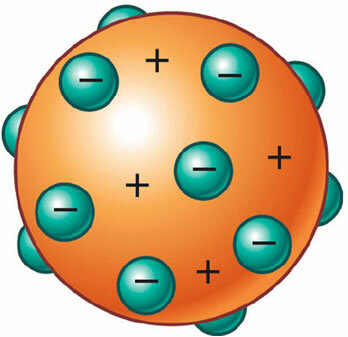O ion is defined as an electrified atom that gained or lost electrons. already the cation it's the anion are considered ions.
Cation
You cations, are usually formed by alkali metals (IA family) and alkaline earth metals (IIA family) from the periodic table.
They present positive charge, as they lose one or more electrons (ionization), thus resulting in a higher number of protons in relation to the number of electrons.
Types of Cations
- Cations that have a +1 charge are called monopositive;
- Cations that have the charge +2 are called devices;
- Cations that have a charge +3 are called trippositives;
- The cations that have a charge +4 are the tetrapositive.
Examples of Cations
- At+1 (sodium)
- K+1 (potassium)
- mg+2 (magnesium)
- Here+2 (calcium)
- Zn+2 (zinc)
- Al+3 (aluminum)
- Pb+4 (lead)
anion
You anions, in turn, have negative charge, as they receive one or more electrons, resulting in a greater number of electrons in relation to the number of protons.
Types of Anions
- the anions monovalent have a charge of -1;
- the anions bivalent have -2 charge;
- the anions trivalents have a -3 charge;
- the anions tetravalent have -4 charge.
Examples of Anions
- Cl-1 (chlorine)
- br-1(Brom)
- F-1(fluorine)
- O-2 (oxygen)
- s-2 (sulfur)
- N-3 (nitrogen)
Octet Theory
According to the "Octet Theory", atoms have a tendency to stabilize and stay neutral (same amount of protons and neutrons). That is, with eight electrons in the last electronic layer (valence layer).
For this, the ions join with other atoms in order to seek neutrality.
Example
At ionic bond which occurs between positive and negative ions, the Na+1 (cation) wants to donate an electron and Cl-1 (anion) wants to receive an electron.
When they bind, they form sodium chloride, NaCl (table salt).
Curiosity
The term ion, comes from the Greek “ion”, and means “what goes, going”. Likewise, the terms “anion” and “cation” come from the Greek, where anion means “that which goes up” and the cation “that which goes down”.
Read too:
- Exercises on Atoms
- Periodic table
- Periodic Table Families
- Arrhenius Theory



